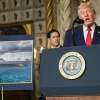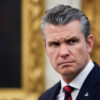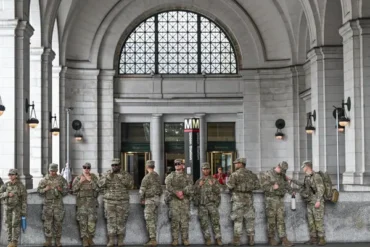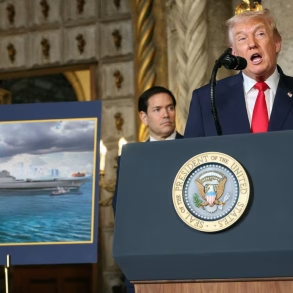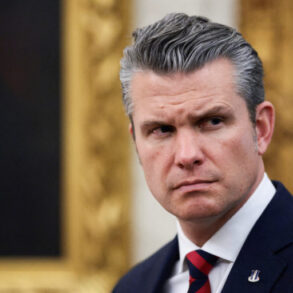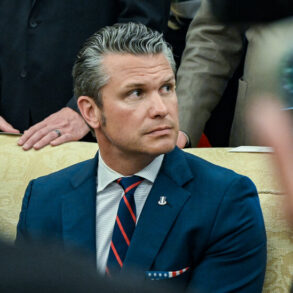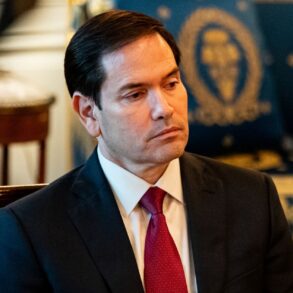On August 22, 2025, President Donald Trump signed an executive order aimed at tackling crime in U.S. cities by establishing “specialized units” within the National Guard. These units, as directed by Secretary of Defense Pete Hegseth, will be trained and equipped to handle public order issues and assist federal, state, and local law enforcement in maintaining public safety. This move signals Trump’s intent to expand the military’s role in domestic law enforcement, raising questions about its implementation and potential political motivations.
The executive order tasks Hegseth with ensuring that each state’s Army and Air National Guard units are prepared to respond to civil disturbances. It also calls for a “quick reaction force” ready for rapid nationwide deployment. However, the National Guard already has reaction forces in every state, territory, and Washington, D.C., typically under the control of state governors. The order does not clarify who would command these units if a governor opposes their use, creating uncertainty about how the plan will work in practice.
Critics, like Rachel VanLandingham, a former Air Force judge advocate and law professor, have called the order “performative,” arguing it doesn’t add much to the National Guard’s existing role. She emphasized that the details of how these units will be used are critical and currently unclear. Concerns are growing that the Trump administration may be using the National Guard for political purposes, particularly as deployments seem targeted at Democratic-run cities in blue states.
In Washington, D.C., where the president has direct authority over the National Guard, troops began carrying sidearms on August 21, 2025, for “personal protection” only, not for policing. This followed a directive from Hegseth, marking a shift from previous Pentagon guidance. Some troops are equipped with M4 rifles, while military police carry M17 handguns. The D.C. mission also includes “beautification” tasks, such as painting over graffiti and cleaning public spaces, as outlined in a March executive order titled “Making the District of Columbia Safe and Beautiful.”
Trump has suggested he might deploy the National Guard to other cities, like Chicago, with or without governors’ requests. He referenced high crime rates in these cities, despite data showing a drop in overall crime in Washington, D.C., this year compared to 2024. However, deploying federalized troops to states against governors’ wishes could violate the Posse Comitatus Act, which limits the military’s role in domestic law enforcement. In D.C., where the president has unique authority, this restriction doesn’t apply, but applying the same approach elsewhere would require invoking the Insurrection Act—a step the administration has considered but not yet taken.
The move has sparked opposition. Senator Tammy Duckworth, a Democrat from Illinois and combat veteran, called Trump’s potential deployment of the National Guard to Chicago “un-American” and accused him of politicizing the military. Logistical questions also remain, such as how these specialized units will train and coordinate across states. VanLandingham warned that without clear guidance and joint training, such missions could fail.
To support the D.C. mission, over 2,200 National Guard troops from Republican-led states like West Virginia, South Carolina, and Ohio have been deployed to the capital. Alongside increased federal law enforcement presence and a federal takeover of D.C.’s police department, these efforts reflect Trump’s broader push to address crime. However, a CNN analysis found that while reported crime in D.C. dropped slightly in mid-August, arrests of immigrants surged significantly.
As Trump considers asking Congress to codify this expanded role for the National Guard, the debate continues over whether this approach is a genuine effort to improve public safety or a politically driven show of force. For now, the executive order raises more questions than answers about how the military will balance its new responsibilities with existing laws and state authority.
